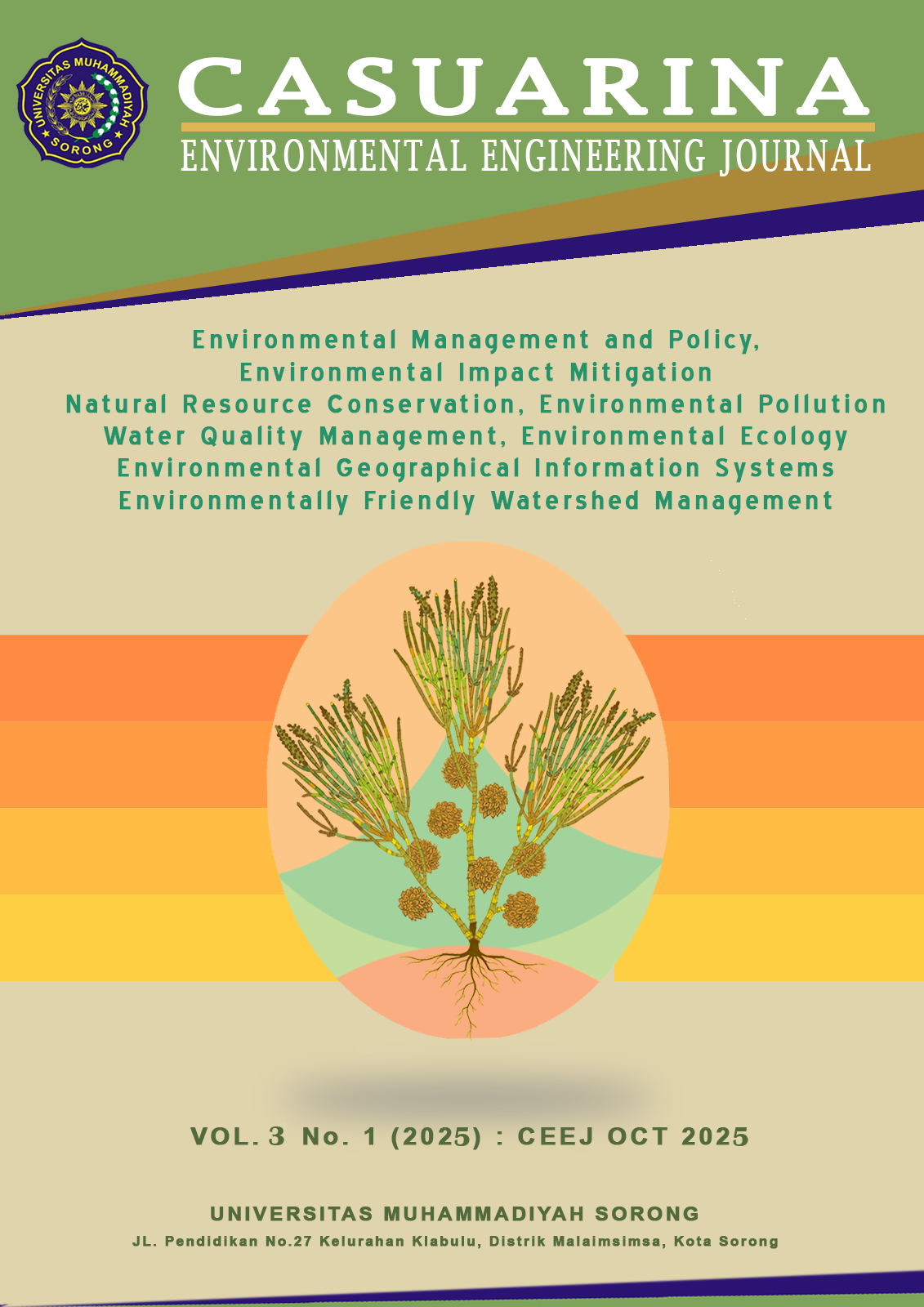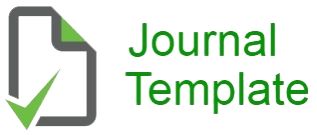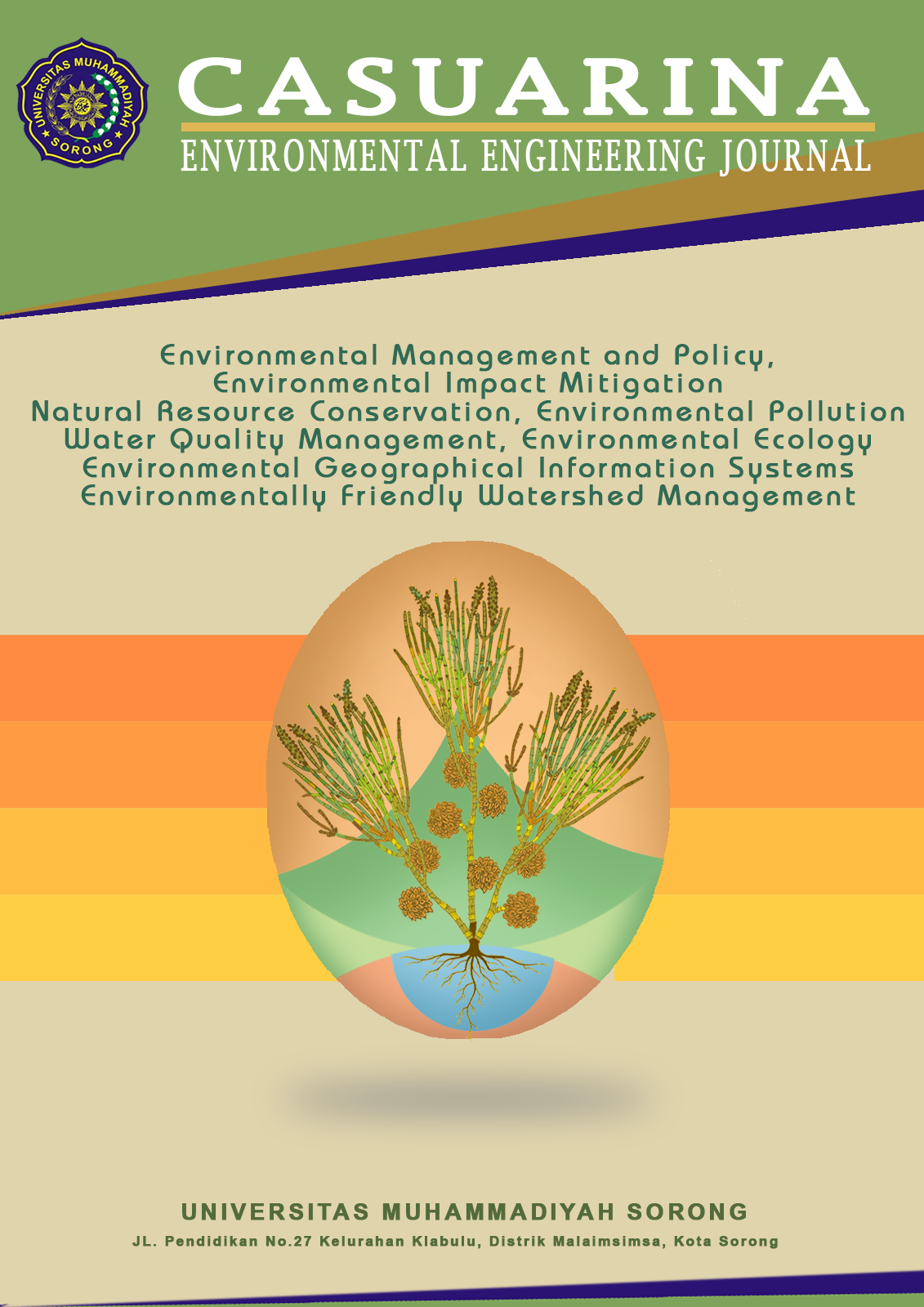Analisis Efektivitas dan Efisiensi Kinerja IPAL Domestik di MGS Menggung PT. Pertamina EP Cepu
Bahasa Indonesia
DOI:
https://doi.org/10.33506/ceej.v3i1.4954Keywords:
Air Limbah domestik, Efisiensi Pengolahan, Total Suspended Solid (TSS), Total ColiformAbstract
Domestic wastewater produced by industrial areas, although not directly derived from the production process, still has the potential to cause environmental pollution if not properly treated. This waste generally contains organic pollutants, nutrients, oil and fat, and pathogenic microorganisms. If not properly treated, waste discharge into water bodies can increase BOD, COD, TSS, Oil and Greaset, Ammonia, and Total Coliform levels, which have an impact on water quality degradation. This study aims to evaluate the effectiveness of the performance of the Wastewater Treatment Plant (WWTP) at PT MGS Menggung PT Pertamina EP Cepu by utilizing primary data through field observations and interviews, as well as secondary data in the form of laboratory test results for the period July–December 2024. The evaluation was carried out on six wastewater quality parameters, namely Biochemical Oxygen Demand (BOD), Chemical Oxygen Demand (COD), Total Suspended Solids (TSS), Oil and Grease, Ammonia, and Total Coliform. The analysis results show that the average BOD reduction efficiency is 42.8% and COD is 52.31%, which is considered quite effective. Conversely, the reduction efficiency of TSS (38.80%) and Total coliform (39.32%) was still less than optimal. This low efficiency indicates the need for improvements in the sedimentation and disinfection units. Therefore, it is recommended to add a coagulation-flocculation process and optimize the chlorination system to improve WWTP performance so that the treated product meets domestic wastewater quality standards as stipulated in applicable regulations
References
1. United Nations Environment Programme (UNEP). Wastewater Management A UN-Water Analytical Brief. In 2021. p. 1–52.
2. Yusof, N., Lau, W. J., & Ismail AF. Recent trends of heavy metal removal from water/wastewater by membrane technologies. Journal of Industrial and Engineering Chemistry. 2019;76:17–28. 3. Syarif, F., & Yuningsih S. Evaluasi Kinerja IPAL Domestik pada Kawasan Industri di Indonesia. Jurnal Teknik Lingkungan. 2020;26:187–195.
4. Arifin, A., & Pratama YA. mampuan Hybrid Anaerobic Baffled Reactor (ABR) Biofilter dalam Menurunkan Total Nitrogen dan Fosfor pada Air Limbah Apartemen. Jurnal Ilmu Lingkungan. 2023;21:574–80.
5. Metcalf & Eddy Inc, Tchobanoglous G, Stensel H, Tsuchihashi R, Burton F. Wastewater Engineering: Treatment and Resource Recovery. 1994;
6. Abma WR, Driessen W, Haarhuis R, van Loosdrecht MCM. Upgrading of sewage treatment plant by sustainable and cost-effective separate treatment of industrial wastewater. Water Science and Technology. 2010 Apr 1;61(7):1715–22.
7. Kurniawan R, et al. Optimasi proses biofilter aerob dan sedimentasi. 2021
8. Putri A, Pratama D. Analisis kinerja IPAL dalam penurunan beban pencemar. 2020.
9. Rahman A, et al. Efektivitas biofilter dalam menurunkan TSS pada IPAL domestik. 2019
10. Rusten B, Eikebrokk B, Ulgenes Y, Lygren E. Design and operations of the Kaldnes moving bed biofilm reactors. Water Sci Technol. 1995;32(8):53–60. doi:10.2166/wst.1995.0312
11. Soeparman HM, Suparmin. Pembuangan tinja dan limbah cair: suatu pengantar. Jakarta: Penerbit
Buku Kedokteran EGC; 2001.
12. Trisyanti D, Soedjono ES, Purnama IL. Domestic wastewater management in Indonesia: a review. IOP Conf Ser Earth Environ Sci. 2017;70(1):012031. doi:10.1088/1755-1315/70/1/012031
Downloads
Published
How to Cite
Issue
Section
License
Copyright (c) 2025 Casuarina: Environmental Engineering Journal

This work is licensed under a Creative Commons Attribution-NonCommercial-ShareAlike 4.0 International License.
Please find the rights and licenses in Casuarina: Environmental Engineering Journal. By submitting the article/manuscript of the article, the author(s) agree with this policy. No specific document sign-off is required.
1. License
The non-commercial use of the article will be governed by the Creative Commons Attribution license as currently displayed on Creative Commons Attribution-NonCommercial-ShareAlike 4.0 International License.
2. Author(s)' Warranties
The author warrants that the article is original, written by the stated author(s), has not been published before, contains no unlawful statements, does not infringe the rights of others, is subject to copyright that is vested exclusively in the author, and free of any third party rights, and that any necessary written permissions to quote from other sources have been obtained by the author(s).
3. User/Public Rights
Casuarina: Environmental Engineering Journal's spirit is to disseminate articles published are as free as possible. Under the Creative Commons license, Casuarina: Environmental Engineering Journal permits users to copy, distribute, display, and perform the work for non-commercial purposes only. Users will also need to attribute authors and Casuarina: Environmental Engineering Journal on distributing works in the journal and other media of publications. Unless otherwise stated, the authors are public entities as soon as their articles got published.
4. Rights of Authors
Authors retain all their rights to the published works, such as (but not limited to) the following rights;
- Copyright and other proprietary rights relating to the article, such as patent rights,
- The right to use the substance of the article in own future works, including lectures and books,
- The right to reproduce the article for own purposes,
- The right to self-archive the article (please read our deposit policy),
- The right to enter into separate, additional contractual arrangements for the non-exclusive distribution of the article's published version (e.g., post it to an institutional repository or publish it in a book), with an acknowledgment of its initial publication in this journal (Casuarina: Environmental Engineering Journal).
5. Co-Authorship
If the article was jointly prepared by more than one author, any authors submitting the manuscript warrants that he/she has been authorized by all co-authors to be agreed on this copyright and license notice (agreement) on their behalf, and agrees to inform his/her co-authors of the terms of this policy. Sentralisasi will not be held liable for anything that may arise due to the author(s) internal dispute. Sentralisasi will only communicate with the corresponding author.
6. Royalties
Being an open accessed journal and disseminating articles for free under the Creative Commons license term mentioned, author(s) aware that Casuarina: Environmental Engineering Journal entitles the author(s) to no royalties or other fees.
7. Miscellaneous
Casuarina: Environmental Engineering Journal will publish the article (or have it published) in the journal if the article editorial process is successfully completed. Casuarina: Environmental Engineering Journal's editors may modify the article to a style of punctuation, spelling, capitalization, referencing, and usage that deems appropriate. The author acknowledges that the article may be published so that it will be publicly accessible and such access will be free of charge for the readers as mentioned in point 3.








